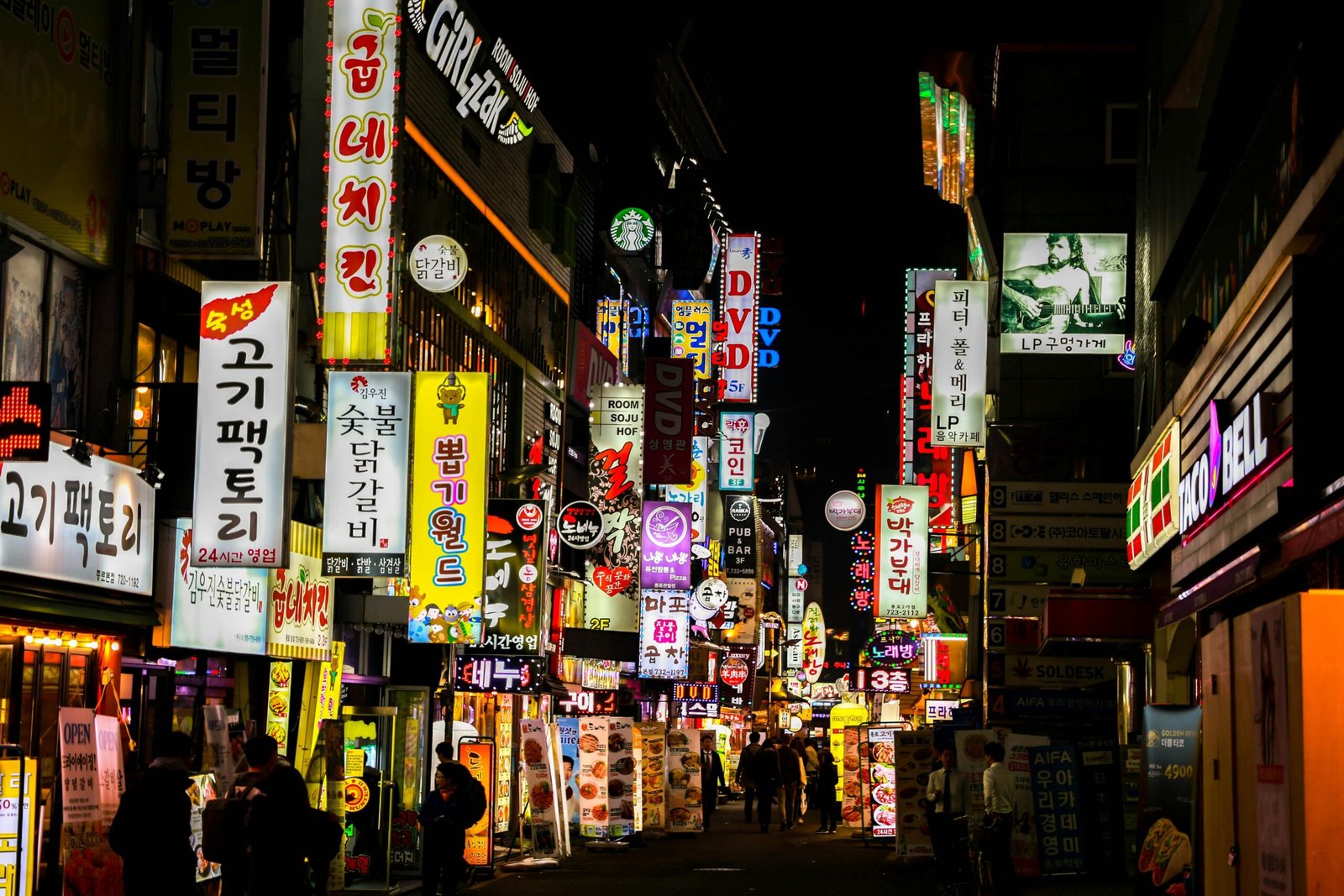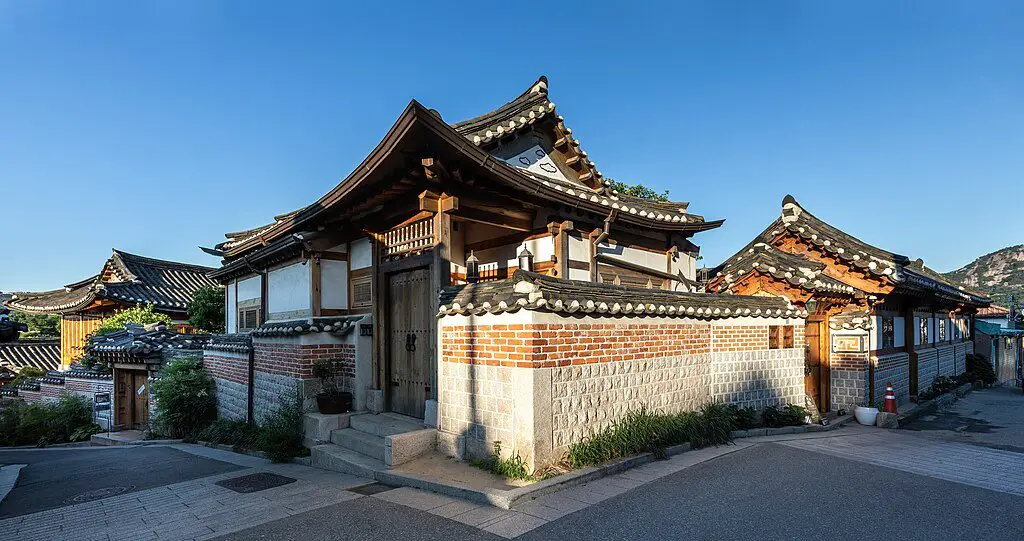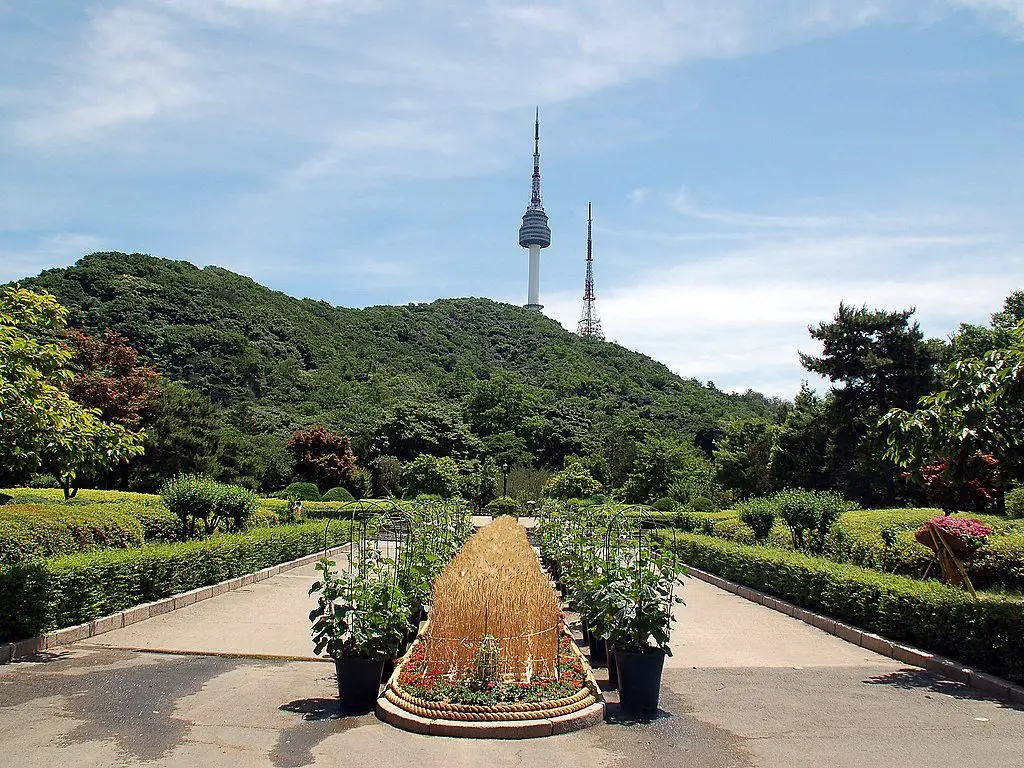Seoul, the capital city of South Korea, is a remarkable metropolis that showcases an extraordinary blend of tradition and modernity. This vibrant urban center is not only the political and economic heart of the nation but also a cultural hub that attracts millions of visitors each year. With its rich historical background and dynamic lifestyle, Seoul offers a unique experience that caters to a wide range of interests.
The city’s historical significance can be traced back over 600 years, with landmarks such as Gyeongbokgung Palace and Bukchon Hanok Village standing as testimony to its storied past. These sites reflect the architectural splendor and cultural heritage of the Joseon Dynasty, allowing visitors to immerse themselves in Korea’s history. As one explores the streets of Seoul, they will notice that ancient sites coexist harmoniously with cutting-edge developments, such as the striking Dongdaemun Design Plaza and the futuristic Lotte World Tower.
The cultural richness of Seoul is palpable in its diverse neighborhoods, which each tell a different story. Areas such as Insadong and Hongdae offer a mix of traditional crafts, street art, and local cuisine, inviting travelers to explore the city’s artistic landscape while enjoying the bustling atmosphere. Moreover, Seoul’s commitment to preserving its cultural heritage is evident in the various festivals and events hosted throughout the year, which celebrate art, music, and history.
This blog post serves as a comprehensive guide to navigating the multifaceted charm of Seoul. Through thoughtful exploration, we will unveil both the modern marvels and the hidden historical gems that define this fascinating city. Whether you are a history enthusiast or a lover of contemporary innovation, Seoul promises an enriching experience that leaves a lasting impression.
Modern Marvels of Seoul
Seoul, a vibrant metropolis, seamlessly blends tradition with modernity, highlighted by its striking skyline adorned with contemporary architectural wonders. Among these, the Dongdaemun Design Plaza (DDP) stands out as an emblem of innovative design. Conceived by the world-renowned architect Zaha Hadid, this dynamic structure has been recognized for its fluid form and futuristic aesthetics, celebrating the interplay between architecture and its cultural context. The DDP serves not merely as a design hub but as a venue for fashion shows, exhibitions, and various cultural events, embodying Seoul’s commitment to nurturing creativity and innovation.
Another landmark defining Seoul’s modern architectural landscape is the Lotte World Tower, which soars to 555 meters, making it the tallest building in South Korea. This colossal structure houses retail spaces, luxury hotels, observation decks, and office spaces. The design reflects the city’s aspirations, with its cutting-edge engineering and sustainable features, such as advanced energy-efficient systems that minimize environmental impact. The tower’s viewing platform offers breathtaking vistas of the city, allowing visitors to appreciate the extensive urban planning and green spaces that coexist with towering skyscrapers.
Moreover, other noteworthy structures like the Seoul City Hall and the Yongsan International Business District illustrate the city’s emphasis on sustainable architecture integrated with public spaces. Such designs are not only aesthetically pleasing but also promote urban livability and community interaction. Through their unique architectural features, these modern marvels serve to communicate Seoul’s resilience, bearing witness to its rapid growth and technological advancements. They encapsulate a city that looks forward while honoring its rich historical tapestry, creating a harmonious balance between the old and the new.
Historical Gems: The Forgotten Past
Seoul, a city that seamlessly marries the contemporary and the traditional, is dotted with historical gems that offer a glimpse into its rich past. Among these treasures, the Seongyojang House stands out as a quintessential example of traditional Korean architecture. Built during the late Joseon Dynasty, this hanok (Korean traditional house) is a testament to the architectural ingenuity that defines the era. Seongyojang House not only showcases the beauty of wooden structures with their elegant curves and intricate designs but also serves as an embodiment of the lifestyle and values of its time. The home offers insights into the social customs and familial structures prevalent during its construction, reflecting a deep-rooted connection to Korea’s Confucian ideology.
Another remarkable site deserving of attention is the historic Bukchon Hanok Village. Nestled between Gyeongbokgung and Changdeokgung palaces, this village features hundreds of traditional hanoks that have been meticulously preserved. Walking through the narrow alleys of Bukchon provides visitors a unique opportunity to experience the ambience of old Seoul, with houses that have stood the test of time. The architectural style of Bukchon is characterized by its distinctive tiled roofs, wooden frameworks, and charming courtyards. Each house tells a story of the families that once inhabited them, connecting modern citizens with their historical lineage.
In an era of rapid urbanization, it is crucial to recognize the significance of preserving these historical sites. They not only offer an escape to the past but also play an essential role in maintaining the cultural identity of Seoul amidst modernization. By safeguarding these architectural wonders, future generations can continue to learn about and appreciate the historical narratives that shape the city. It is imperative that both locals and tourists take the time to explore these hidden gems, ensuring that the stories of the past are not lost in the hustle and bustle of contemporary life.
Cultural Experiences in Seoul
Seoul, a city where the past and the present coexist harmoniously, offers a plethora of cultural experiences that reflect its rich heritage and dynamic modernity. Visitors to this vibrant metropolis will find an array of options to immerse themselves in true Korean culture, enhancing their understanding of both traditional and contemporary life.
One prominent experience is the traditional Korean tea ceremony, which provides insight into the significance of tea in Korean culture. During these ceremonies, participants are introduced to the art of tea preparation, including the intricacies of choosing the right tea leaves and employing specific brewing techniques. The serene atmosphere and emphasis on mindfulness allow visitors to appreciate not only the flavors but also the cultural rituals surrounding this age-old practice.
In addition to tea ceremonies, Seoul’s street food tours present an excellent opportunity to savor the city’s culinary landscape. From tteokbokki (spicy rice cakes) to hotteok (sweet pancakes), the diverse offerings reflect the city’s gastronomic heritage. Engaging with local vendors not only tantalizes the taste buds but also fosters connections with the people who contribute to the vibrant food scene. Each bite tells a story, revealing the historical influences that have shaped Korean cuisine over the decades.
Moreover, local art exhibitions further enrich the cultural exploration of Seoul. The city is home to numerous galleries and creative spaces showcasing the works of both emerging and established artists. From traditional calligraphy to contemporary installations, these exhibitions reflect the evolving artistic landscape of Korea. Attending these events facilitates a deeper understanding of local narratives and the cultural dialogues occurring within the community.
Engaging in these cultural experiences in Seoul not only enhances one’s exploration of the city but also fosters a meaningful appreciation of its diverse history and modern innovations. Each experience serves as a bridge connecting visitors to the essence of Korean identity, ultimately leaving a lasting impression of this unique capital.
Parks and Green Spaces: Nature in the City
Seoul, a sprawling metropolis known for its vibrant urban landscape, also provides residents and visitors with an abundance of parks and green spaces that offer a refreshing escape from the city’s hustle and bustle. These areas play a crucial role in the urban environment, not only serving as Oasis of tranquility but also acting as historical sites that reflect the rich history and culture of the region.
Among the notable green spaces is Namsan Park, situated at the center of Seoul. This iconic park, encompassing the renowned N Seoul Tower, offers panoramic views of the city. Its well-maintained walking trails and diverse plant life contribute to a serene experience that contrasts sharply with the busy streets below. The park’s historical significance, tied to the preservation of traditional structures and centuries-old trees, highlights its cultural importance within modern-day Seoul.
Another significant green area is Hangang Park, which stretches along the Han River. This extensive park provides a variety of recreational activities, including cycling, jogging, picnicking, and water sports like kayaking and paddleboarding. The park is composed of multiple sections, each with unique attractions and amenities, catering to diverse interests. The juxtaposition of the flowing river against the skyline offers a picturesque setting for relaxation and social gatherings, fostering community engagement amidst the vibrant city life.
Moreover, these parks act as important ecological buffers, improving air quality and biodiversity within the metropolitan area. They provide residents with valuable opportunities to connect with nature, thus enhancing their quality of life. The thoughtful integration of these parks into Seoul’s urban fabric plays a pivotal role in preserving the city’s cultural heritage while accommodating the demands of modern living. As such, they are not merely recreational spaces but integral components of the city’s historical and cultural identity.
Seoul’s Culinary Delights: A Fusion of Old and New
Seoul’s food scene represents a captivating fusion of traditional Korean cuisine with contemporary culinary influences, making it one of the most dynamic food capitals in the world. With a rich gastronomic heritage that dates back centuries, Korean food, characterized by bold flavors and diverse ingredients, is experiencing a renaissance as chefs and food enthusiasts innovate within the frameworks of age-old recipes. The integration of international flavors has led to the emergence of unique dishes that reflect the modern palate while honoring their traditional roots.
A quintessential example of this culinary fusion is the evolution of bibimbap, a beloved Korean mixed rice dish. Traditionally served with a variety of vegetables, meat, and a fried egg atop a bed of rice, modern interpretations often include novel ingredients such as quinoa or artisanal sauces, catering to health-conscious diners and adventurous food lovers alike. Similarly, kimchi, a staple of Korean cuisine, is finding its way into various innovative dishes, from kimchi quesadillas to gourmet kimchi burgers, thereby expanding its allure beyond its conventional serving.
In addition to upscale dining experiences, Seoul is also home to a vibrant street food culture. Markets such as Gwangjang Market and Myeongdong Street are renowned for offering an array of culinary delights, from savory tteokbokki (spicy rice cakes) to sweet hotteok (pancakes filled with cinnamon sugar). These bustling hubs present an excellent opportunity for locals and tourists to savor authentic flavors while enjoying the lively atmosphere. Hidden food spots, often overshadowed by more popular establishments, offer discoveries that can enrich the culinary journey through the city, providing dishes primarily frequented by residents.
The interplay of tradition and modernity plays a significant role in how food is perceived and consumed in Seoul today. The city stands as a testament to how culinary traditions can evolve and thrive alongside modern innovations, making the culinary landscape a vital aspect of Seoul’s cultural fabric.
The Life of Koreans: A Blend of Tradition and Modernity
The daily life of Seoul’s residents is a fascinating tapestry woven from traditional customs and modern advancements. Despite the rapid urbanization and technological growth that have transformed the city, Koreans hold steadfast to their rich cultural heritage. This blend is particularly evident in social dynamics, family structures, and lifestyle choices that define everyday life in this vibrant metropolis.
Korean society is characterized by a strong sense of family loyalty, which remains a cornerstone of social interactions. Traditionally, families were hierarchical, emphasizing the importance of respect for elders. Although modernization has introduced more egalitarian relationships within households, the reverence for ancestry and family values persists. Modern Korean families continue to celebrate significant cultural practices, such as Chuseok, a harvest festival where families gather to honor their ancestors. Such traditions foster unity amid the fast-paced lifestyle influenced by urban living.
Incorporating technology into daily life, Seoul’s residents are often seen using smartphones and other devices to streamline their tasks. Digital payments, online shopping, and social media have permeated many aspects of the urban culture, reshaping how people interact and communicate. This technological integration offers convenience but also poses challenges to the preservation of traditional face-to-face interactions. The rise of cafes and co-working spaces has transformed social gatherings, often replacing more formal settings with casual environments conducive to conversations and collaboration.
Moreover, education plays a vital role in the lives of Seoul’s citizens, with a significant emphasis placed on academic achievement. Young Koreans navigate intense competition, which is deeply embedded in their schooling experience. This pursuit of success is often balanced with traditional values, as many parents pass down their cultural legacies to the next generations, ensuring that the essential aspects of Korean identity are not lost in the hustle of modernity.
Navigating Seoul: Tips for Tourists
Seoul, a vibrant metropolis that seamlessly blends modernity with tradition, offers visitors a plethora of attractions and experiences. To navigate this bustling city effectively, tourists should familiarize themselves with its transportation system. The Seoul Metropolitan Subway is an efficient and user-friendly option, featuring signs in English, Korean, and Japanese, ensuring ease for international travelers. Purchasing a T-money card upon arrival streamlines travel across the subway and buses, making it convenient to explore various districts.
When planning your itinerary, consider visiting popular areas such as Myeongdong for shopping, Insadong for traditional art and crafts, and Gangnam for its contemporary lifestyle. Additionally, cultural landmarks like Gyeongbokgung Palace and Bukchon Hanok Village offer insights into Korea’s rich history. The best times to visit these attractions are generally during weekdays, as weekends can attract larger crowds. For outdoor enthusiasts, spring (April to June) and autumn (September to November) are ideal, thanks to mild weather and beautiful seasonal landscapes.
Cultural etiquette plays a significant role in enhancing your experience in Seoul. It is essential to greet locals with a slight bow and maintain a courteous demeanor. Although English is spoken in tourist areas, learning a few basic Korean phrases, such as “안녕하세요” (annyeonghaseyo – hello) or “감사합니다” (gamsahamnida – thank you), can foster goodwill and enrich interactions with the locals. When dining, remember to wait for the eldest person at the table to begin eating before you start, as a sign of respect.
Lastly, consider connecting with local hosts through platforms like Airbnb or local tour agencies, as they can offer personalized insights and recommend hidden gems off the well-trodden path. These local connections enhance the experience and provide tourists with a deeper understanding of Seoul’s culture and lifestyle.
Conclusion
Seoul, a sprawling metropolis embodying a rich tapestry of history and innovation, invites travelers to explore its multifaceted identity. The duality of modern marvels and hidden historical gems provides a unique lens through which one can appreciate the city. Contemporary structures like the futuristic Dongdaemun Design Plaza or the skyline-defining N Seoul Tower stand in striking contrast to the serenity of ancient sites such as Gyeongbokgung Palace and the historical alleyways of Bukchon Hanok Village.
Embracing both aspects of Seoul is essential for those seeking a comprehensive experience. The energetic pulse of the city’s urban life offers insights into South Korea’s rapid development and innovation. Meanwhile, the quiet corners and preserved traditions evoke a sense of nostalgia and connection to a deeper cultural heritage that dates back centuries. Each historical site serves as a reminder of the resilience and evolution that characterize the Korean spirit.
As visitors traverse through bustling markets, cutting-edge art districts, and venerable temples, they enrich their understanding of Seoul’s narrative. Engaging with both its starkly modern accomplishments and its treasured past allows for a well-rounded appreciation of the city. This blend not only highlights the dynamic spirit of Seoul but also showcases an extraordinary cultural confluence that defines the Korean experience.
In conclusion, discovering Seoul means embracing the remarkable duality that exists within its boundaries. By attentively mapping out visits to both contemporary attractions and historic marvels, travelers can form a profound connection with this vibrant city. Therefore, it is highly encouraged to delve into the layers of what makes Seoul fascinating, as this journey promises to unravel stories that are both ancient and modern, leaving an indelible mark on the soul of each visitor.









